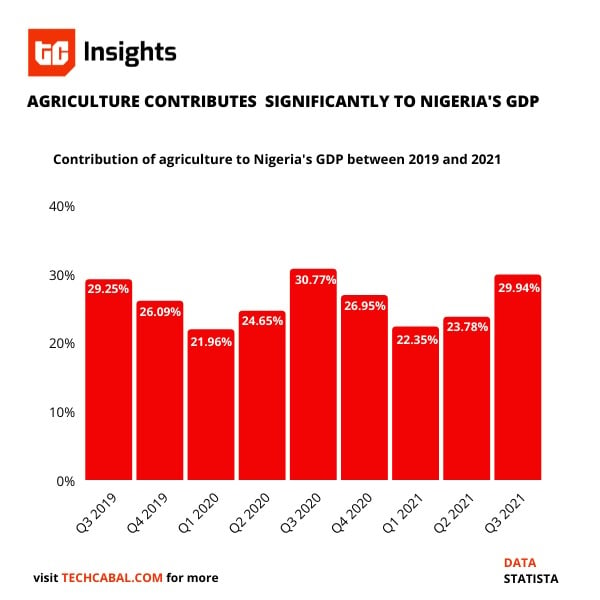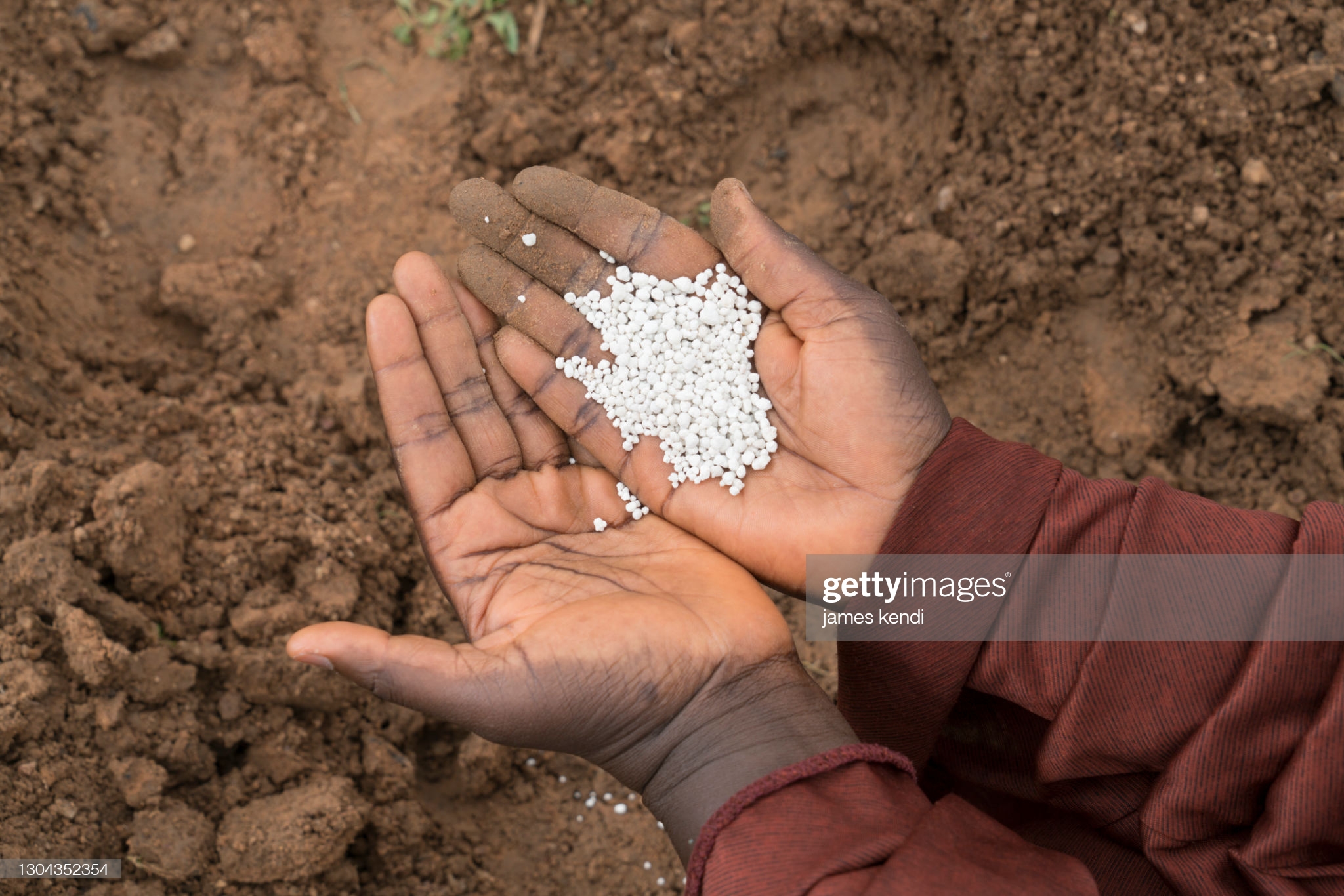
November 29th 2021
The Next Wave provides a futuristic analysis of BizTech and innovation in Africa. Subscribe here to get it directly in your inbox on Sundays at 3 PM (WAT).
Nigeria’s President Muhammadu Buhari has asked citizens of the country to farm their way out of poverty, but little does he realise that that road, like many of such in Nigeria, is filled with potholes.
Although Nigeria exported food worth ₦803 billion between 2016 and 2019, it has imported food worth even more—₦3.35 trillion—within the same period. Since 1970, Nigeria’s agriculture industry has faced the same set of challenges that have turned the country from an agricultural-export powerhouse to a massive agricultural importer. Some of these challenges include limited access to land, inadequate storage facilities, limited access to credit facilities, slow adoption of modern technologies, difficulty in accessing markets, and heavy reliance on rain-fed watering.
All these, and more, suggest that agriculture is perhaps not the economic saviour the Nigerian government thinks it to be.
The Nigerian president’s incessant clamour for the youth to go into farming is misplaced because 70% of Nigerians already engage in farming at a subsistence level and, despite the sector bringing in 30% of GDP, they are knee-deep in poverty.

Raising agricultural efficiency with tech

To fill the credit access gap, the Nigerian government established the Anchor Borrowers Programme (ABP) in 2015 to provide loans to farm labourers and small-farm owners at interest rates as low as 9%—way lower than the typical bank loan average of 30%—to boost agricultural production.
This is a laudable effort. As of March last year, according to Nigeria’s central bank, ₦554 billion had been disbursed into the programme and 3.8 million farmers have benefited. However, this is less than 5% of the 66 million farmers that need this funding.
Technology has always been a mainstay in the Nigerian government’s plan to make agriculture more efficient. In 2011, during the implementation of the Agricultural Transformation Agenda (ATA), the country’s government established the Growth Enhancement Support Scheme (GESS) to provide farmers with vouchers for fertilisers and seeds directly from their mobile phones through mobile payments provider Cellulant’s mobile wallet.
The government’s effort to use technology to improve the agriculture industry has motivated agritech companies to also throw themselves into solving the problem. These agritech companies offer digital solutions that help provide farmers with access to market, financial service, credit, farm inputs, quality seeds, fertilisers, insecticides, pesticides, and equipment.
Partner Message

Welcome millions of new customers from across the world by accepting payments for your business by accepting Discover Global Network cards on Flutterwave.
Create a Flutterwave account for FREE, here.
Agritech could make the difference
Despite the difficulties faced by the over 80 agritechs in Nigeria, some companies have been able to make significant progress within a few years since launching. Within 5 years of operation, AgroMall accumulated 530,000 customers; AFEX accumulated 103,000 customers; and Farmcrowdy and Thrive Agric accumulated 25,000 and 22,000 customers respectively,
Scaling is difficult for agritech companies because of a paucity of investments and bad infrastructure. For example, in 2019, venture capital firms invested about $747 million in Nigerian startups. While 62% of that amount went to fintech companies in that year, agritechs attracted just $2 million (0.3%). Many agritech companies rely on grants to survive.
Investing in agriculture is very risky, mostly because of the tedious and delicate farming process—planting, growth monitoring, storage, and transportation—which, if things don’t go well, can lead to a loss of investments. An example of this is the difficulty crowdfunding agritech company Thrive Agric faced when it couldn’t pay its crowdfunders because the pandemic lockdowns stopped farmers from going to their farms; and even when they did, getting their produce to buyers cost more.
Despite this, there has been significant progress in recent times. Last year, agritech Releaf raised $2.7 million in VC funding and $1.5 million in grants. After its turbulent phase, Thrive Agric eventually received a $1.75 million grant from USAID’s Trade Hub.
Perhaps the biggest potential agritech has to help improve the lives of farmers is demonstrated in AFEX’s $100 million bond announcement last December. This investment promises to expand food production in Nigeria by raising storage capacity by at least 10% and financing farming on 250,000 hectares of land in 6 Nigerian states—Kano, Oyo, Kaduna, Ogun, Cross River, and Abuja.
By 2050, Nigeria’s population is set to reach 400 million. It is important that the country gets agriculture right. It must use technology and innovation to achieve food security and lift more people out of poverty—a mandate that would require synergy between its government and private sector.
Have a great week.
Thank you for reading The Next Wave. Please share today’s edition with your network on WhatsApp, Telegram and other platforms, and reply to this email to let us know what we can be better at.
Subscribe to our TC Daily Newsletter to receive all the technology and business stories you need each weekday at 7 AM (WAT).
Follow TechCabal on Twitter, Instagram, Facebook, and LinkedIn to stay engaged in our real-time conversations on tech and innovation in Africa.
Sultan Quadri, Staff Writer, TechCabal.






















